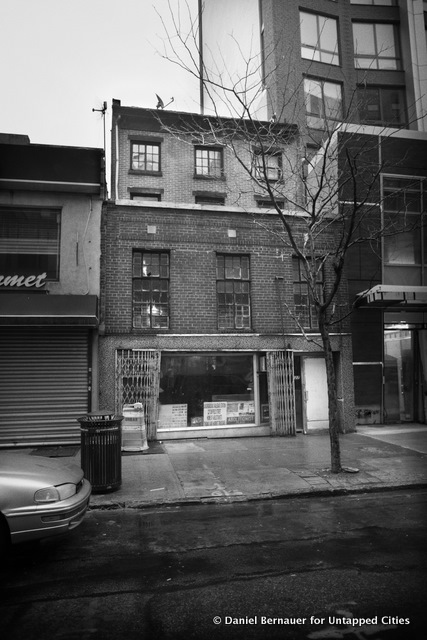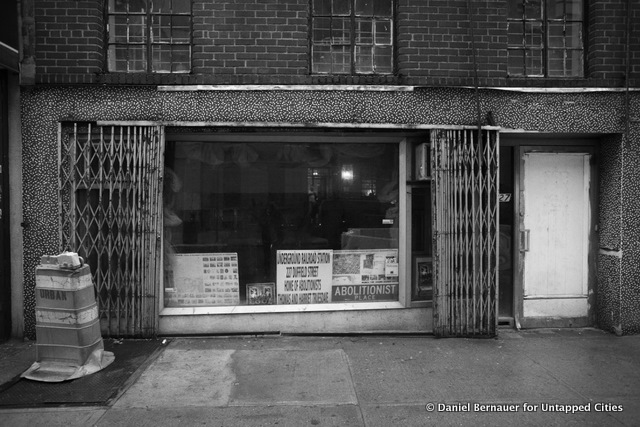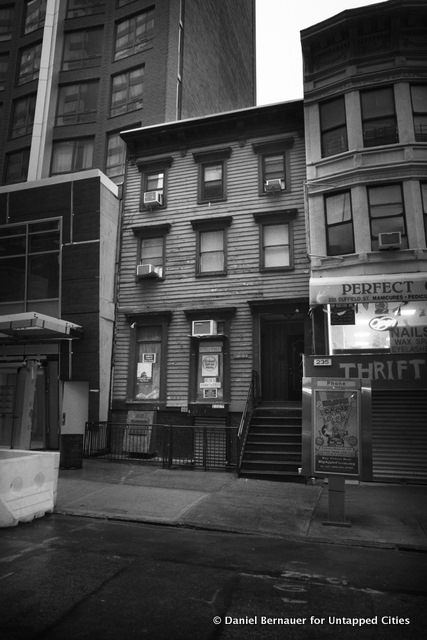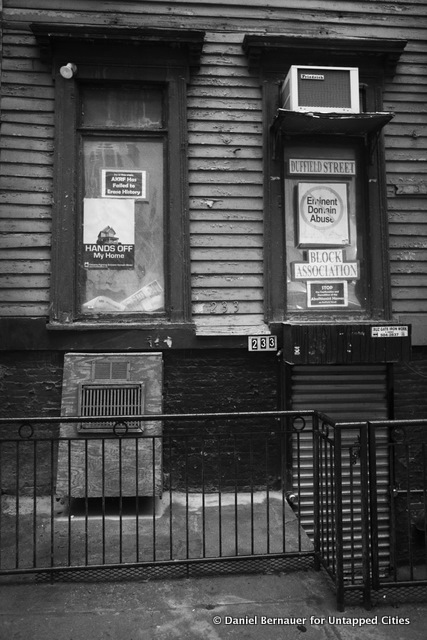4. Abolitionist Place — 227 and 233 Duffield Street, and 436 Gold Street, Brooklyn
 227 Duffield Street
227 Duffield Street
The houses at 227, 233 Duffield Street and 436 Gold Street reportedly were stops on the Underground Railroad, and residents claim there is a tunnel connecting the basements of the houses on Duffield Street, documented in the lawsuit FUREE v. Bloomberg. The downtown Brooklyn / Brooklyn Heights area was a major focal point of the abolitionist movement–Plymouth Church is just a short walk from Duffield Street. In 227 Duffield lived Thomas and Harriet Truesdell, both staunch abolitionists. Thomas Truesdell attended the 1836 Rhode Island Anti-Slavery Convention. Harriet Truesdell was an active member of the Providence Female Anti-Slavery Society and a planning committee member of the Anti-Slavery Convention of American Women in 1838.

These properties were the center of controversy between residents and the developers who want to demolish the buildings using the powers of eminent domain to make way for the Atlantic Yards (now the Pacific Park) development project. Non-profit organization FUREE (Families United for Racial and Economic Equality) entered into a lawsuit with resident Joy Chatel against Mayor Bloomberg, members of his staff, the Economic Development Corporation, the City of New York, the Department of Housing and Preservation and the City Council of New York City. In the brief, the plaintiffs contest the NYC Economic Development Corporation-commissioned report for lack of thoroughness and incomplete research methodology, including failure to hire an archaeologist to examine the basements.
 233 Duffield Street
233 Duffield Street

While 227 Duffield Street is now being turned into a museum, other buildings on the street have been demolished. Plans for development of Albee Square, called City Point, are still in development.





